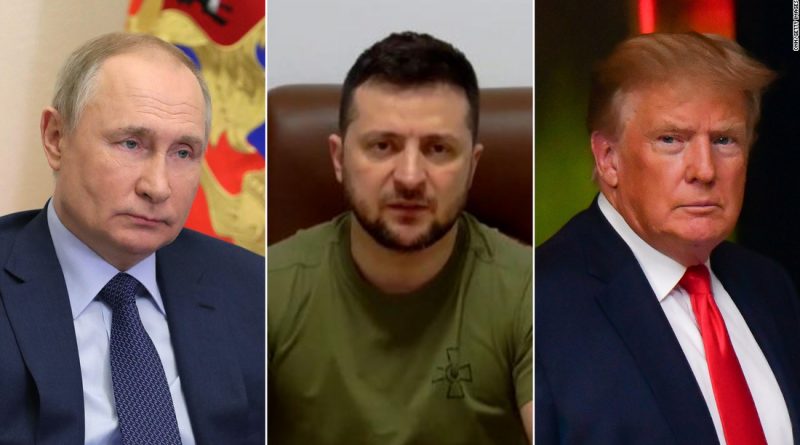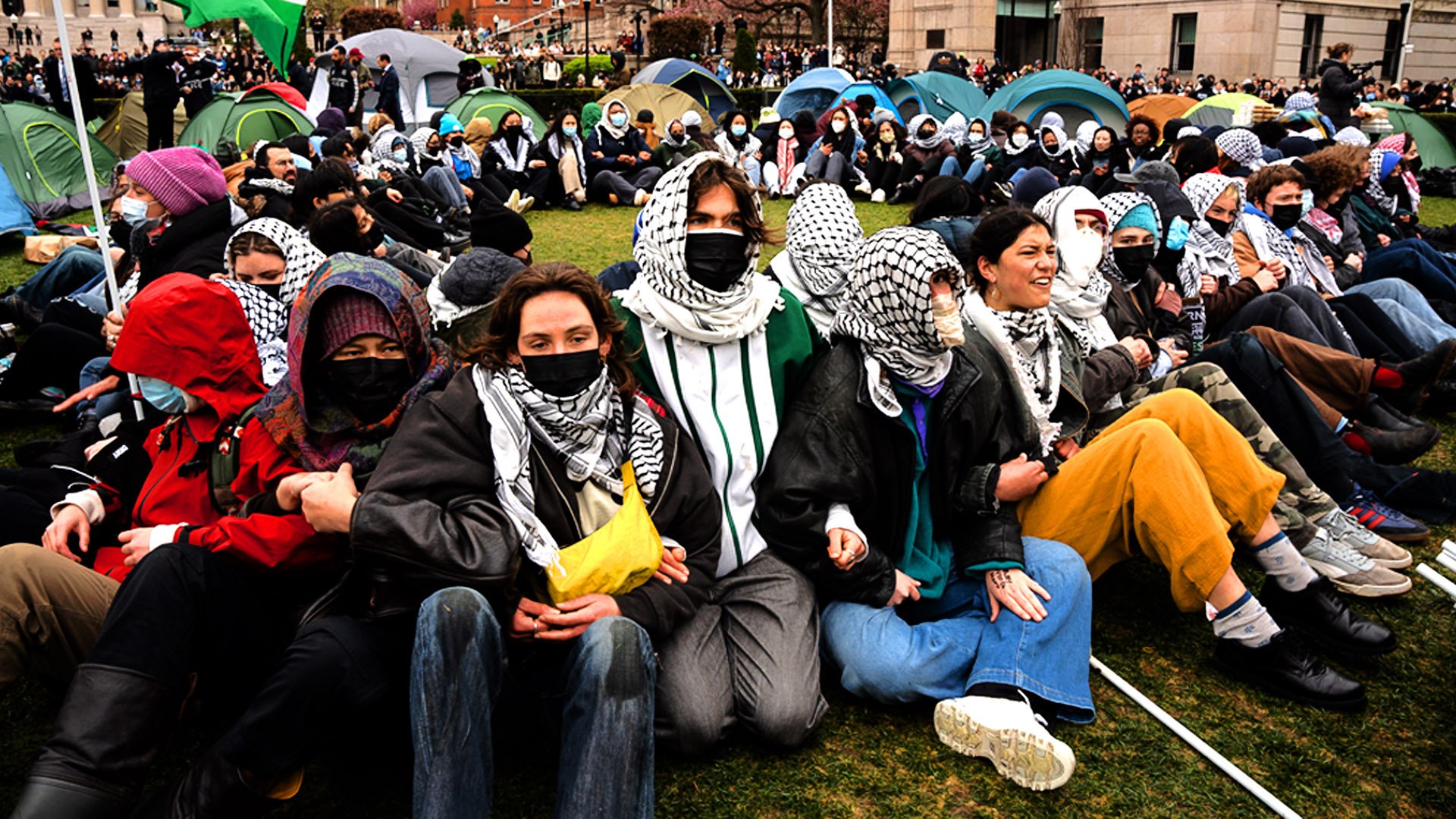Russian President Vladimir Putin has ratcheted up tensions with the West for the better part of the last decade — he annexed Crimea, meddled in US elections, poisoned an ex-spy on British soil, and more. Nearly every step of the way, former President Donald Trump parroted Kremlin talking points, excused Russian aggression and sometimes even embraced it outright.
Experts say Trump’s actions weakened Ukraine, divided NATO, emboldened Putin and helped get us to where we are today. And even with Trump no longer in office, his impact lives on in the form of Putin-friendly commentary in conservative media and from some Republican lawmakers.
“One of the key reasons Putin probably felt comfortable launching the invasion of Ukraine was the extent to which the West has been weakened and destabilized, and democracy undermined, and political divisions sown, in the five years since he attacked our election in 2016,” said Garrett Graff, a historian and journalist with expertise in national security and Cold War issues.
Here are four things to remember about Trump, Ukraine and Putin.
Trump took Russia’s side when the conflict began
A popular revolution in 2014 ousted the pro-Russia regime in Kyiv, which was led by President Viktor Yanukovych, and replaced it with a Western-leaning government. Russian troops soon invaded the Ukrainian territory of Crimea, initiating the armed conflict that escalated this year.
Within weeks, Trump praised Putin for how he handled the takeover of Crimea and predicted that “the rest of Ukraine will fall … fairly quickly.” Echoing Kremlin propaganda, Trump said in a TV interview that the Crimean people “would rather be with Russia,” a position he also pushed in private. One of his 2016 campaign aides falsely claimed that “Russia did not seize Crimea.”
“Trump said that Crimea is Russian, because people speak Russian,” said Elena Petukhova of Molfar, a Kyiv-based business intelligence firm, who called it an “absolutely pro-Kremlin” view. “According to this logic, the entire territory of the United States should belong to Great Britain.”
When Russian-backed separatists in eastern Ukraine shot down a commercial airliner in 2014, killing 298 people, Trump sowed doubt about Russia’s involvement. He embraced Putin’s denials, even after US and European officials publicly concluded that Russia was complicit.
Trump’s campaign chairman Paul Manafort — who had spent a decade advising Yanukovych in Ukraine — collaborated in 2016 with a Russian spy on a secret plan for Trump to help Russia control eastern Ukraine, according to special counsel Robert Mueller’s report. The proposal envisioned that Yanukovych would return to lead a Russian puppet state in eastern Ukraine.
This pro-Russian rhetoric didn’t always translate into policy for the Trump White House. For instance, his administration said sanctions would continue until Russia returned Crimea. But the rhetoric gave Putin an unexpected cheerleader in DC and created tensions within NATO.
Trump’s mixed record on arming Ukraine
President Joe Biden has dramatically increased the flow of arms to Ukraine, including anti-tank missiles, anti-aircraft systems, drones, rifles and other weapons. Importantly, it was Trump who first sent lethal aid, in a major reversal from the Obama administration, which refused to send offensive weapons to Ukraine during the early stages of fighting in the eastern Donbas region.
But Trump has a checkered past on this topic. As a candidate, his position was unclear at best. Trump campaign aides intervened during the 2016 Republican National Convention to block language from the GOP party platform that called on the US to send lethal arms to Ukraine.
And in 2019, Trump infamously withheld nearly $400 million in military aid as part of his attempt to pressure Zelensky into announcing sham corruption investigations into Biden and his family’s business dealings. The weapons in the stalled aid package included the Javelin missiles that have emerged as a crucial part of Ukraine’s surprisingly robust defenses against Russian tanks.
This led to Trump’s first impeachment, but he was acquitted by the GOP-run Senate. Some of the Republicans who opposed his impeachment are now urging Biden to send more weapons.
“The GOP is the party of the Russia hawks. For a half-century, one of their central organizing principles was opposing the Soviet threat,” Graff said, adding that Trump upended that history and made some Republicans go soft on Putin. “But in this last month, a lot of Republicans who became wishy-washy on Russia have come back to their natural position as Russia hawks.”
Trump led an anti-Ukraine smear campaign
Throughout his presidency, Trump pushed a litany of false claims about Ukraine — in public and private. He rarely missed an opportunity to criticize the country. A widely respected diplomat testified to Congress that Trump believed “Ukraine was a corrupt country, full of terrible people.”
Trump’s biggest lie was about the 2016 election. He rejected the reality that Russia interfered to help him win. Instead, he falsely claimed it was Ukraine who meddled, and that he was the victim. These lies, which he repeated dozens of times, were a double boon to the Kremlin: they downplayed Russia’s brazen attack on US democracy, while simultaneously smearing Ukraine.
These views quickly became the party line for GOP lawmakers and conservative pundits, even though top Russia experts like Fiona Hill publicly warned that it was all Russian propaganda.
This was a break from decades of warm US policy toward Ukraine, especially when dealing with leaders like Zelensky who tried to reorient the country toward the West. Former President George W. Bush praised the Ukrainian people in 2004 for protesting a rigged election, and Obama celebrated the 2014 revolution that ousted a Kremlin-friendly government in Kyiv.
“When Trump muddies the water by praising Putin, or undermines Zelensky and spreads falsehoods about Ukraine, this has real implications for how this crisis plays out,” said Jordan Gans-Morse, a Northwestern University professor who was a Fulbright Scholar in Ukraine. “It shapes public opinion in ways that tie Biden’s hands when he’s a de facto wartime president.”
Trump repeatedly undermined Zelensky
GQ magazine recently wrote about Zelensky’s “endless heroism” and Time magazine said he “united the world.” But the mythos of Zelensky as a Churchill-like figure is a new development.
Less than three years ago, Zelensky was a fledgling politician that Trump and his cronies took advantage of as part of a ham-handed attempt to smear candidate Biden. The US-Ukraine relationship was put on the backburner and replaced with Trump’s personal and political needs.
Zelensky’s top priorities were to get more shipments of American weapons and to meet Trump at the White House. Veteran US diplomats in Kyiv shared this goal. But they were smeared and sidelined — and replaced by a band of Trump loyalists who made his demands clear: Zelensky could only get these things if he announced that Ukraine was investigating Biden for corruption.
This strong-arming by Team Trump forced Zelensky, in his first months in office, to navigate a surprisingly hostile relationship with the US, a supposed top ally in his fight against Russia.
“Zelensky had more than enough on his plate when he came to power,” Gans-Morse said. “The country was already at war with Russia. He’s a political novice. And then, on top of that, the most powerful person in the world essentially extorted him, and he had to devote time and energy to deal with that. It’s unclear what the full impact was, but it definitely tested Zelensky.”




